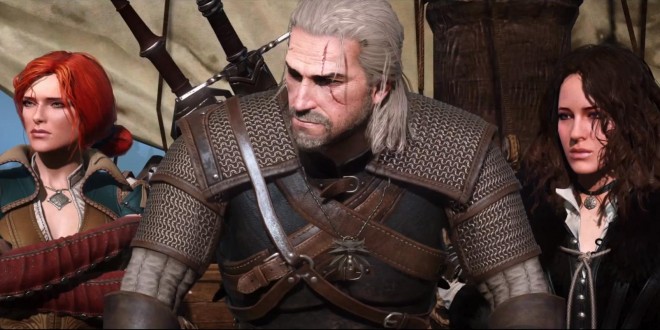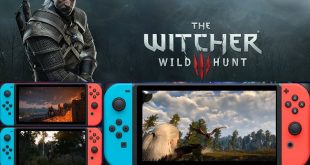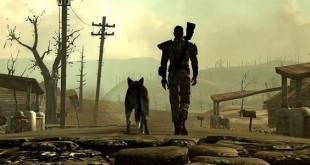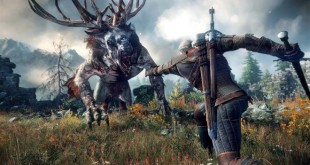In what appears to be a customary routine with every new game release, I find myself having to attempt to address and dispel seemingly absurd claims regarding the nature of The Witcher 3’s content. CD Project Red, developers of this gorgeous, new role-playing epic, received some unexpected flak from Polygon, where journalist and editor Arthur Gies criticized the game for allegedly sexist elements. He even alluded to some potential racism in CDPR’s ranks, due to the lack of persons of colour in the game. It is astonishing how nonsense of this calibre is given a platform these days, and this faux-higher-moral-ground act is used to attack or censor artistic integrity, but I shall nonetheless put the game under a microscope and see if any of Arthur’s accusations ring true.
Here are a few of my favourite quotes from the article that I shall be using as a reference point for my analysis of the game, particularly the first three:
“the world CD Projekt has created is oppressively misogynist”
“Then it kills them [women], over and over. “
“the inclusion of so much violence explicitly directed against women feels like a clear, disconcerting choice. It’s not just present, it’s frequently a focus.”
“I don’t recall a single non-white humanoid anywhere “
“I couldn’t stop looking for any example of a person of color anywhere”
I am rather late to the party, and we have already seen a number of notable figures rush to the defense of CD Project Red in light of this article, including Adrian Chmielarz, the mind behind The Vanishing of Ethan Carter, and Daniel Vávra, best known for his writing on the Mafia games. Their exploration and responses to the Polygon review are conversely profound and sensible…but not everything has been said yet and so I am here to fill in the blanks.
It would be an understatement to say I took the Polygon article with a pinch of salt because it is not the first time authors on the site have made some questionable remarks and done some questionable things, but nevertheless I kept an open mind, considering the possibility that there may well be elements in the game that are arguably sexist (or racist). That is why I waited till now, after having played over 60 hours of the game to harness, and ultimately present my views on the matter.
Pushing an Agenda
It is important that we begin by making a distinction- there is art that contains racism or sexism, and there is art that actually promotes or endorses a racist or sexist agenda. It would appear that Arthur Gies takes no issue with conflating the two, and hence I feel his comments depict a gravely unfair misrepresentation of CDPR’s intent. If you apply his logic to other forms of media like classic pieces of literature that portray racism, such as Of Mice & Men, The Adventures of Huckleberry Finn, 12 Years A Slave, and even The Diary of Anne Frank, then you can come to the conclusion that these don’t merely contain racist themes, but are intrinsically racist even though they present the horrifying reality of racism at the time they are set (or were written), and doesn’t that just sound ludicrous? Not to Polygon, evidently!

Excuse me while I play the devil’s advocate but hypothetically, even if the game creators’ intentions were indeed to push a bigoted agenda, if you ask any self-proclaimed “progressive” liberal what harm this could cause, they come up rather short on answers. When I watched the Nazi propaganda film: Triumph of the Will, I didn’t follow up by donning a Nazi uniform, developing anti-Semitic views and setting up concentration camps. No, if I recall correctly, I believe I went back on Facebook for some film banter with my Jewish friend. As a multi-cultural, western society, we are too impervious to bigotry these days to let our real-life views and actions be dictated by a piece of entertainment, regardless of what agenda it may or may not be pushing.
For years, right-wing, religious puritans have warned us of the harm video games have upon our soul, and how they encourage violence and murder. Of course nobody with common sense, gamers and otherwise, have ever taken them seriously because the statistics and studies investigating this issue prove otherwise- as violent video game sales have surged, youth crime has plummeted and this cannot merely be perceived as an incapacitation effect, but in fact, certain styles of games can even increase empathy and encourage positive social behaviour.
So why is it that this repeatedly debunked claim has come back to haunt us once again, only this time from the left wing, with the assertion that video games cause, not only violence, but gender-targeted violence towards women? Arthur never once spouts this assertion, but his writing comes straight from the same school of thought of the Anita Sarkeesians out there who put forth this exact case. If I am now guilty of misrepresenting his views, then he is guilty of being petty and needlessly harsh, because otherwise why would the “sexist” themes even be worth singling out and deriding, if he did not believe that they have any real-world consequences?

A Diverse World
Within my first hour of the game, my impressions were “what a ghastly place”, and sixty hours later my perception has not changed one iota. Certainly, from a graphics standpoint, the vast meadows, fields, hills and forests look simply wondrous, on the other hand, there is a war going on, and the world is rife with tension and brutality. You will witness all manner of people being hung or burnt at the stake simply for being in the wrong place at the wrong time or for belonging to a different race, and lowly farmers being flailed for being unable to produce fresh corn for the army. In this world, violence and murder are a means to almost every possible end. As a result, slaughtered peasants lay eviscerated on road sides, others are strung up by nooses, bandits and cannibals await you in the shrubberies, stinking bodies are piled in mass graves, the village widows weep over their dead husbands, and orphans cry over their murdered parents. This is perhaps the bleakest world you will have ever encountered in a video game and it shows the worst of humanity, and non-humans alike. And thus, racism and sexism are not necessarily out of the question in this setting, along with greed, violence, lust, cruelty, deception, and all manner of evils.

In fact, race and ultimately “difference” plays a significant role in the dynamic between the NPC’s and the storyline itself. CD Project Red created a richly diverse society with endemic racial tensions as well as a disparity between the wealthy and the poor. CDPR also incorporate themes of homophobia, as Mislav a non-stereotypical but self-loathing homosexual hunter tells you about his male lover committing suicide after their love affair was discovered by his non-accepting family. You can choose to console him, and at worst, you can be neutral and not press him further, and just continue the hunt together.
It should go without saying that these are not glorified, but I felt it was worth noting before someone jumps in with buzz-words like “male power fantasy”, “toxic masculinity” or “patriarchal values”. If anything, we have to hand it to CD Project Red for being empathetic to a diverse array of people varying in race, class, gender and orientation and they are certainly not handled in a one-dimensional manner nor feel shoe-horned in.
 Load the Game Video Games, Reviews, Game News, Game Reviews & Game Video Trailers
Load the Game Video Games, Reviews, Game News, Game Reviews & Game Video Trailers



